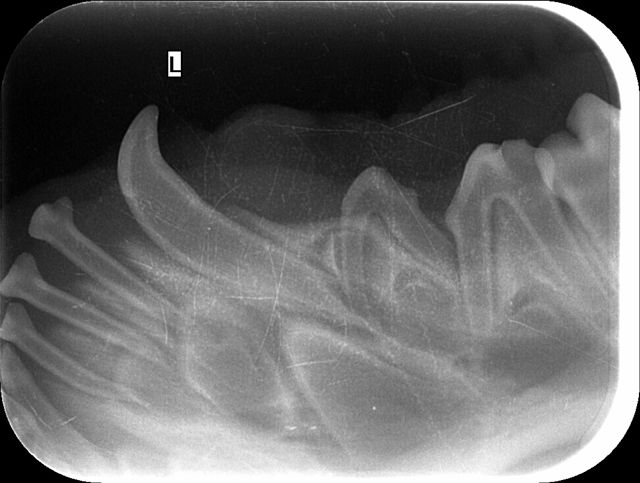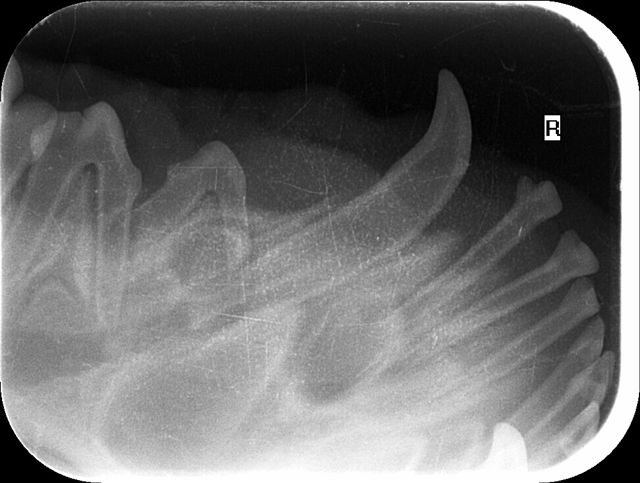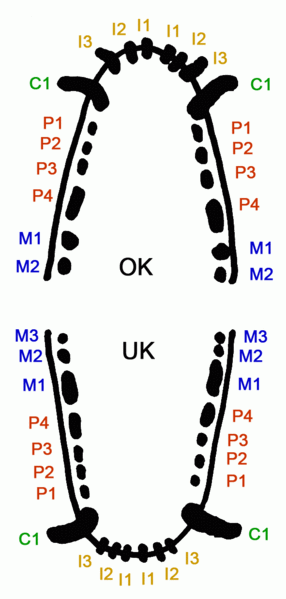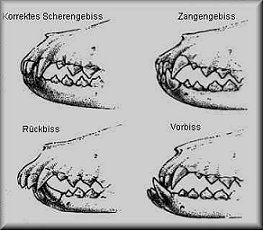Teeth and jaws of the Australian Cattle Dog
The Australian Cattle Dog is a hypodontia is relatively common because of the breed standard is not only a full dentition scissors bite prescribes. It can be missing up to a plurality of teeth are the most affected Prämularen. For the dog is the lack of teeth is not a problem as long as there are not too many in a row.
Missing teeth are hereditary. But the mode of inheritance is unknown, therefore if the mating status of teeth should always be included the ancestors of the breeding animals.
Lower jaw of Estorillo Teufelsjoch at 8 weeks you can easily see the layout of the permanent teeth, has seen, as in the X-ray confirmed Estorillo is complete dentition.
The Australian Cattle Dog is a hypodontia is relatively common because of the breed standard is not only a full dentition scissors bite prescribes. It can be missing up to a plurality of teeth are the most affected Prämularen. For the dog is the lack of teeth is not a problem as long as there are not too many in a row.
Missing teeth are hereditary. But the mode of inheritance is unknown, therefore if the mating status of teeth should always be included the ancestors of the breeding animals.
Lower jaw of Estorillo Teufelsjoch at 8 weeks you can easily see the layout of the permanent teeth, has seen, as in the X-ray confirmed Estorillo is complete dentition.


The permanent teeth of the dog has 42 teeth in one jaw holds 3 incisors (Insisivi I) a corner or canine teeth (canine C) 4 front cheek teeth (premolars P). In Oberkiegfer there are 2 in the mandible posterior three molars (molars M)
The milk teeth of the dog has 28 teeth, the P1 and the posterior molars do not have a milk tooth predecessor. The change of teeth begins from the third until the seventh month and should be completed in months.

The breed standard calls for the Australian Cattle Dog a scissors bite, the incisors of the upper jaw fall exactly on the cutting teeth of the mandible.
Malocclusions in the ACD are found again and again:

Undershot lower jaw is longer than the upper jaw
Undershot the upper jaw is longer than the lower jaw
Cross or bite, the incisors meet
In any case, a dog with a jaw abnormality a dental specialist present to avoid any painful injury from malpositioned canines when something like this occurs, the canine teeth are ground.
All jaw anomalies are an absolute exclusion of breeding, as incorrect jaw positions are hereditary.


